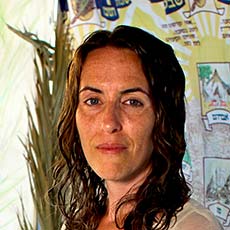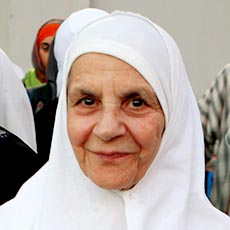Meet the Pilgrims
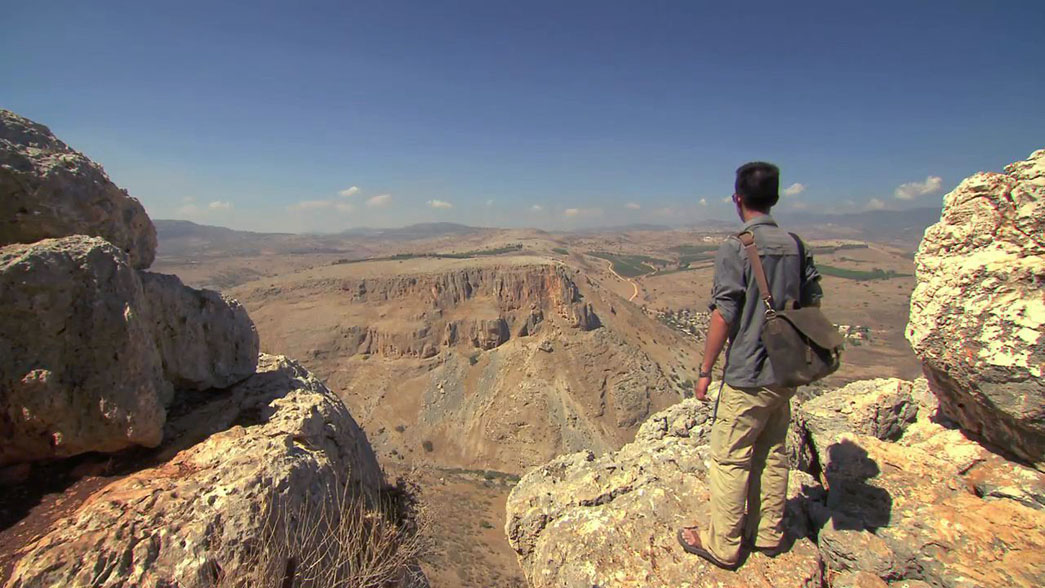
Brian's Story
Walk in the footsteps of Christ on the Jesus Trail with American pilgrim Brian Kwan.
Explore Pilgrim Profiles
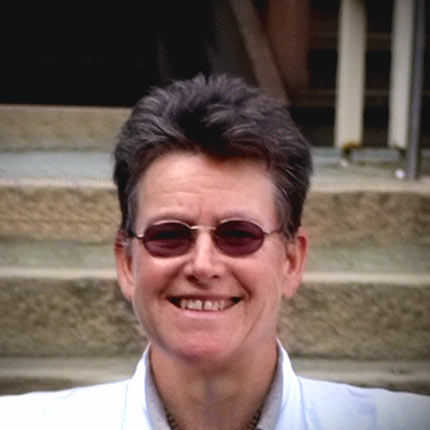
Marianne Dresser
Benicia, CA
Pilgrim to Shikoku
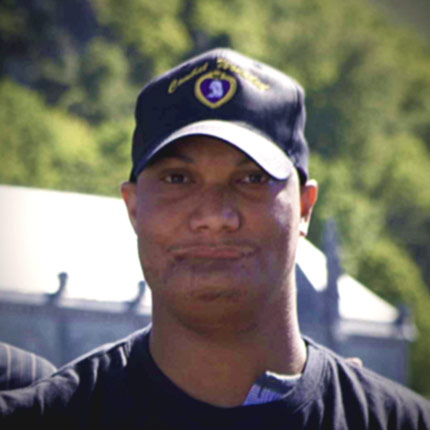
Zachary Herrick
Bethesda, MD
Pilgrim to Lourdes
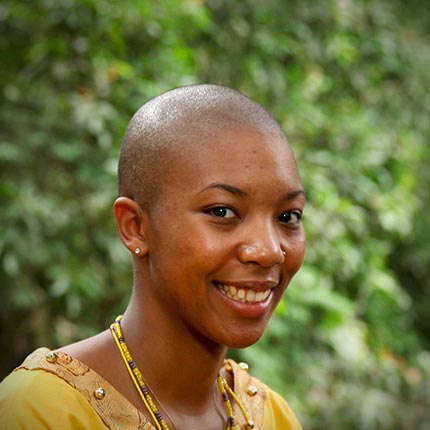
Oni Yebiye Hinton
New York, NY
Pilgrim to Osun-Osogbo
Marianne Dresser
Hometown: Benicia, CA
Occupation: Book editor
Age: 56
Q. Why did you decide to go on the pilgrimage to Shikoku?
A. I first read of the 88-temple pilgrimage many years ago in Oliver Statler's Japanese Pilgrimage, and have long wanted to participate in it. I have been a Buddhist practitioner for over two decades, and met my first Buddhist teacher in Japan. I have done self-directed pilgrimage travel in other parts of Asia, so it seemed a natural fit, especially combined with my love of hiking.
Q. What did you do to prepare for the journey?
A. I am a regular hiker/backpacker, so no special fitness program was needed to prepare for the hiking. But because the pilgrimage had special significance for me in regard to the recent and tragic loss of my teacher, I prepared a photograph of him and a set of prayers/dedications to offer alongside chanting the Heart Sutra at each temple. For me, the pilgrimage was an extended period of walking meditation and devotional practice, and an opportunity to express my deep gratitude to my dear teacher.
Q. What was the most memorable moment during your trek around the island? Most surprising? Hardest?
A. The following two encounters with fellow pilgrims—Japanese henro I met while hiking—may illustrate these questions. I hiked alongside a middle-age lady for awhile and we exchanged bemused comments (me in my rudimentary Japanese) about the weather—hard rain that turned to snow flurries. She soon pulled ahead of me and disappeared on the trail through the forest. Her cheerful spirit and stamina impressed me greatly. And I met a nice gentleman at the summit of Nyotai-san, the mountain between Temples 87 and 88, where we shared lunch while he told me the story of the mountain. This was on one of the hardest sections of trail, called henro-korogashi ("where henro fall down"). This gentleman was 80 years old, ill with cancer, yet he made this difficult hike weekly "for health." The spirit and resilience of the Japanese people is something I greatly admire, and these encounters put in perspective my own relatively minor travails.
Q. How do you feel about your experience now that you've returned?
A. After the Shikoku tour I had planned to visit my Zen teacher, whom I hadn't seen in many years, at his temple in Yamanashi Prefecture on Honshu. But he perished in the devastating events of March 2011 (earthquake/tsunami). So I dedicated my pilgrimage efforts to him, carried his picture and offered prayers at each temple in his honor. I also dedicated to the memory of my dear canine companion of 16 years who passed away just before I left for this trip. These acts of remembrance and honoring made the journey especially meaningful for me.
Q. Would you go again to Shikoku? Would you go on a different pilgrimage?
A. I already have plans to return to Shikoku in November 2015 to hike different parts of the route to 30 or so more temples, ones not visited on my 2013 trip.
Q. What would you tell someone who was thinking about going on a pilgrimage to Shikoku?
A. The Shikoku pilgrimage is open to anyone and no special connection to Buddhism or Japanese culture is required, so for many Westerners it is perhaps mostly just an interesting hiking trip in a beautiful part of Japan that is "off the beaten path." But being a Buddhist practitioner with a strong spiritual connection to Japan invested this journey with great richness and depth for me. It is wonderful that Japan's cultural traditions are so open to all, and its tradition of hospitality is unparalleled, but I would say that it is well worth the effort for would-be henro to delve into some of the deeper spiritual and cultural aspects of such a journey.
Q. Anything else you want to share with us?
A. The act of making a pilgrimage, however undertaken—even if just "for fun" or as cultural tourism—is transformative. By walking the way, you embody the Way.
Zachary Herrick
Hometown: Bethesda, MD
Occupation: Student, retired US Army rifleman
Age: 23
Q. Why did you decide to go on the pilgrimage to Lourdes?
A. I decided to go on this international military pilgrimage to know that I'm not alone in finding that new normal, trying to heal spiritually and seeing other military men and women from around the world with similar stories and backgrounds. Knowing that we're all in the same boat, we might as well paddle together.
Q. What was the most memorable moment during your stay in Lourdes? Most surprising? Hardest?
A. The most memorable moment was the story of the WWII German soldiers marching in the town and the people were afraid, but then realized the soldiers had no rifles or fixed bayonets. [The soldiers] went straight for the church and as they cried and prayed, they asked for forgiveness, and the townspeople saw this and cried with them. I believe I'm never going to forget that story as long as I live.
The most surprising is how much it effected me when I left I was sad.
The hardest thing was what Christians call the holy ghost or spirit, just letting that in. That was vary difficult for me, just letting someone else take control of my life.
Q. How do you feel about your experience now that you've returned?
A. After returning, I felt more relaxed and at peace.
Q. Are you planning on going back to Lourdes?
A. I would go again, but I would like to volunteer.
Q. What advice do you have for someone thinking about going to Lourdes?
A. I would tell somebody that's thinking of going to this or any other pilgrimage to take it all in, come in with an open mind and open heart. Love each other and if nothing else, you walk away a better person than if you'd not have entered at all.
Q. Anything else you'd like to share about your experience?
A. I can say this: I don't know what's on the other side of the hill and to be honest, I don't care nor am I afraid. Going to Lourdes, France and meeting such wonderful and good hearted people changed my life, this time for the better.
Oni Yebiye Hinton
Hometown: New York, NY
Occupation: Retail
Age: 22
Q. Why did you decide to go on the pilgrimage to Osun-Osogbo?
A. I wanted to go to Osogbo to strengthen my relationship with Osun. I grew up a Lucumi practitioner, believing the ways of the Yoruba and Orisa. My trip to Osogbo was to create the beginning of my spiritual journey, as the Yoruba and Lucumi believe. The pilgrimage was more of a way to fulfill a section of my life's purpose, as opposed to a decision.
Q. What was the most memorable moment during your visit? Most surprising? Hardest?
A. The most memorable moment during the visit was visiting the Osun groves. I had the opportunity to visit two, and in each experience I met the most remarkable people. It was at the grove of Osun-Ajigun, in northern Osogbo, that I was able to physically connect with Osun. The groves are the most peaceful, uplifting, and beautiful places I've ever visited.
The most surprising moment was seeing the cultural similarities between youth my age who lived in Osogbo and myself. I believe I was the most surprised because I was able to fully understand that religion connects people together in ways that nationalities could never. I was delighted I was able to connect with youth my own age who had same Traditionalist values, as well as social beliefs as members of the Black Diaspora.
The hardest moment was leaving. Although I stayed in Nigeria for a total of 28 days, traveling between Lagos, Osogbo, and Oyo, I feel I was very much at home and with family. I ached to get back to my own bed in New York, but I didn't want to leave the festivals, celebrations and culture that New York does not have.
Q. How do you feel about your experience now that you've returned?
A. Now that I've returned, I see the world so much differently. Not only because I've embarked on this life-long spiritual journey, but also because I've experienced something that in many ways is indescribable. At work, because I come in contact with many international people, I find that when we discuss my pilgrimage it is something of interest to them, and in many ways a journey they wish to take as well.
Q. Would you go again to Osogbo? Would you go on a different pilgrimage?
A. Osogbo is my home. I will always have a longing to return to the place where Osun was born and to the location where I met my Osun for the first time. Although not a true pilgrimage, I would like to travel the different Traditional villages and towns throughout the Caribbean, North and South America.
Q. What would you tell someone who was thinking about going on a pilgrimage to Osun-Osogbo?
A. A trip to Osogbo is a special one, so treat it as such. During the festivals, it is a life changing experience, but do not forget you are not only in holy grounds but in the same place where people live and work. Be respectful of the Osun state and her people. Do everything in your power to uplift yourself and those around you.
Q. Anything else you want to share with us?
A. I'm grateful to WGBH for the opportunity of uplifting and supporting the Community. A major thank you is also due to the Orisa CDC and all the work they do to support the Community throughout the diaspora.
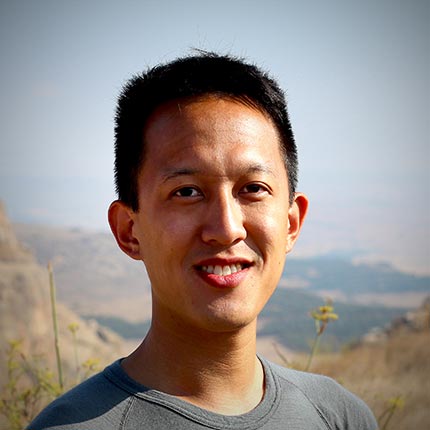
Brian Kwan
Colorado Springs, CO
Pilgrim to Israel

Shambhu and Peggy Misra
Placentia, CA
Pilgrim to the Kumbh Mela
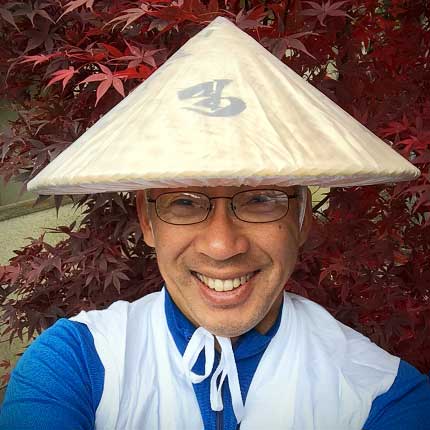
John Osaki
Portland, OR
Pilgrim to Shikoku
Brian Kwan
Hometown: Colorado Springs, CO
Occupation: Freelance photographer
Age: 25
Q. Why did you decide to go on the Jesus Trail?
A. My dad unexpectedly died of a heart attack in June of 2013 at only 54, and I needed to take a break from my routine and re-evaluate where I was and where I was going.
I struggled deeply with my faith, and while I never left the church, I was slipping quickly. But every time I would return to coming to Him as I was and placing my faith wholeheartedly in Jesus again, the best way that I can put it is that I felt like I was returning home. Still, I felt that if I was going to continue my relationship with Christ, I felt the need to learn more about the region that Jesus spent time in.
Q. What was the most memorable moment during your time in Israel? Most surprising? Hardest?
A. When I got lost on the second day of my Jesus Trail hike, I had a piece of bread for breakfast and a bottle of water for the road. I decided to opt out of buying a proper breakfast from my hostel because it was supposed to be a short hike—a few hours long to the next stop in Kibbutz Lavi. Little did I know that when I left that morning, I was about to have one of the longest days of my life. I knew that I was close to Kibbutz Lavi because of the foldout map that I had on hand, but you don't go through Kibbutz Lavi as it appears on the foldout, and you also can't see it from the trail because it's over a hill and I was looking for a sign that didn't exist. I knew after hiking at a moderately quick pace that I had passed the city because I had already been hiking longer than the written estimate, but I didn't know by how much since I never saw it, so I decided to keep going. Every additional step took more energy and hope away from me, but it's pretty unbelievable how much I learned. I saw one person while on my hike, a man in his car who looked straight at me after I waved and yelled for his help but chose to drive away. I had never forgiven a person so quickly when I realized that the anger that I felt was draining all of the energy I needed to complete the hike. Matthew 6:25-27 lingered in my mind for a lot of my journey: "Therefore I tell you, do not worry about your life, what you will eat or drink; or about your body, what you will wear. Is not life more than food, and the body more than clothes? Look at the birds of the air; they do not sow or reap or store away in barns, and yet your heavenly Father feeds them. Are you not much more valuable than they? Can any one of you by worrying add a single hour to your life?" I knew that if I had stopped, then my dad would be sad. And if there's one thing a son wants to do, it's to make his dad proud. So I kept going, and towards the end of my journey right before climbing a steep incline a few hundred feet tall I heard a group of Israelis just ahead under a tree who would end up giving me tea made from some leaves picked on the side of the road, water, a piece of bread and a beef hot dog. They had decided to camp under the tree and save climbing the incline for the next day. Soon after I left them to continue, I would see the breath-taking Sea of Galilee between two giant cliffs and arrive at the guesthouse where I would have a home-cooked meal and an air-conditioned room.
Q. How do you feel about your experience now that you've returned?
A. I'm glad that I did it, but traveling in Israel was a much bigger experience than what I had in mind. I initially intended to seek solid evidence of this and that, to breathe the air Jesus breathed so to speak and to come back with an ironclad decision on whether to continue my relationship with Christ or to abandon the faith. And faith is just not that simple. On the door of the Garden Tomb is written "He Is Not Here. For He is Risen". I traveled a long way to look for something to re-affirm my faith, just to arrive and realize that what and who I was looking for was at home the whole time.
Q. Would you go again to Israel? Would you go on a different pilgrimage?
A. I would consider going back to Israel, but I would go with a friend or two the second time around. Unfortunately, there's still a lot of racism in many parts of Israel that made the experience a lot more than what I had hoped for. Since returning, I hiked a 125km portion of the Camino de Santiago from Sarria to Santiago de Compostela, another pilgrimage in Spain, and I'd do another in a heartbeat.
Q. What would you tell someone who was thinking about going on the Jesus Trail?
1. Don't get lost.
2. Try to trick yourself into thinking cow poop doesn't smell
that bad.
Shambhu and Peggy Misra
Hometown: Placentia, CA
Occupation: Shambhu: business consultant; Peggy: women's health nurse
practitioner
Age: Shambhu: 65; Peggy: 60
Q. Why did you decide to go the pilgrimage to the Kumbh Mela?
A. The Kumbh Mela has always held a fascination in our family over the years. I used
to listen to stories from my ancestors of their Kumbh visits.
Peggy and I had
been to Kumbh once before, in 1977, right after our wedding. The 1977 visit got put
together by adults in my family during my brother's wedding in Kanpur, North India,
a town close to Kumbh site. My sister, Sandhya Pande, who has a travel company in
New Delhi, was putting together groups from the US and Europe that were interested
in attending the 2013 Kumbh and wanted her to customize plans for them. We were
interested in planning our own pilgrimage, as were several of our friends in the US.
We asked my sister to customize plans for our group.
Q. What was the most memorable moment of the trip?
A. The times we peered into the eyes of fellow pilgrims, and found sheer happiness and gratefulness at being an the Kumbh. And it was so simple to strike conversation with anyone.
Q. What was the most surprising moment?
A. Upon reaching the site, we found out that each couple in our group would have their own private tent, bed, and toilet by the tent side. This was especially surprising when you realize that there were about 5 million fellow devotees at the site, housed in several thousands of tents, or in the open by the banks of the river.
Q. What was the hardest moment?
A. We don't remember anything as hard or unbearable. Being at the Kumbh has a transforming effect that helps you accept all that is around you.
Q. How do you feel about your experience now that you've returned?
A. Having been at the Kumbh seems to have transformed us to more humble, more grateful, and more accepting of all of God's creation that is around us.
Q. Would you go again to the Kumbh Mela? Would you go again on a different pilgrimage?
A. The next Kumbh Mela will take place at the same site in 2025. We would be 12
years older. Not sure?
The idea of going to a different pilgrimage sounds very attractive. Especially any
one of the other five that were covered in the SACRED JOURNEYS series, or if some of
our friends get interested, too.
Q. What would you tell someone who was thinking of going to Kumbh Mela?
A. Being a foreigner, we would suggest that you have your trip totally organized by a reputable company. If possible, form a group that has good chemistry. And convince yourself you are going on a spiritual journey.
Q. Anything else you want to share with us?
A. The Kumbh Mela pilgrimage and festival has been going on every 12 years for over two thousand years, at the same site. A great quiet moment there is when you realize how many other souls have prayed and received God's blessings.
John Osaki
Hometown: Portland, OR
Occupation: Tour operator
Age: 57
Q. Why did you decide to go on the pilgrimage to Shikoku?
A. I work in the travel and tourism industry and participated in an industry-sponsored familiarization tour ("fam" tour) of the island of Shikoku in December of 2011. Although I was aware of the Shikoku pilgrimage at that time, the "fam" tour gave me a personal encounter with the pilgrimage and consequently deepened my understanding of it. I stayed on Shikoku a few days following the "fam" tour to walk two segments of the pilgrimage route. I remember walking through a citrus plantation on the outskirts of Matsuyama where I ran into a farmer and his son working under the trees. The farmer asked what I was doing in his field. When he found out that I was trying to follow a section of the pilgrimage route, he hurried off into the trees and harvested two big oranges and presented them to me. That was my first experience with "osettai," the tradition of providing assistance to those on the pilgrimage. I was touched by the simple but generous offer and the spirit of community that was expressed by the gift. It was clear to me at that time that I wanted to return for a more in-depth experience of the pilgrimage. Since that first experience, I've returned three times to walk different portions of the Shikoku pilgrimage route.
Q. What did you do to prepare for your trip?
A. Since my job as a hiking tour leader keeps me outdoors and active for much of the time, I really didn't do much to prepare physically for the pilgrimage. I did, however, prepare myself by learning more about the history and traditions of the pilgrimage by reading. Oliver Statler's excellent book, Japanese Pilgrimage, was particularly enlightening.
Q. What was the most memorable moment during your trek around the island? Most surprising? Hardest?
A. I think the most memorable experiences I've had are those that involve the walks along the older portions of the path especially the parts that pass through the mountains, far from the roads and cities. For me, the experience of the pilgrimage is most profound when one is walking alone in the mountains. I remember hiking up a mountainside during an April snowfall on my way to Shosanji (Temple 12). Snowflakes drifted gently through the boughs of cedar trees; everything was blanketed in white. The mountain trail turned suddenly and unexpectedly into a long flight of stairs. I looked up and at the top of the stairs was a snow-covered statue of Kobo Daishi backed by the giant cedar tree known as "Ippon sugi." I stopped in my tracks. All was peaceful and silent; it was a magical moment.
Most surprising? How relatively few people one meets on what I consider to be the most beautiful portions of the pilgrimage route. On many mountain segments of the route, you can be thoroughly alone. Many folks seem to stick to the more easily traveled routes.
The hardest? Perhaps the 35 kilometer section I walked in a day between Temple 5 and 11. That was a lot of walking on sidewalks and pavement, and though it didn't involve much in the way of elevation gain and loss, pounding along on a hard surface all day can really take a lot out of you!
Q. How do you feel about your experience now that you've returned?
A. For me, being on Shikoku and participating in the pilgrimage provided a frame for understanding that all of life is a pilgrimage. It's easy to lose sight of that amidst the bustle of daily life "back home." When I'm home, I try to remember the peace and sense of simplicity that walking the pilgrimage instills.
Q. Would you go again to Shikoku? Would you go on a different pilgrimage?
A. I don't know if I would seek another pilgrimage. I know that Shikoku continues to call me, and I will be going back. I would like to undertake the entire pilgrimage with my wife and daughter if I can ever figure out a way to make that work.
Q. What would you tell someone who was thinking about going on a pilgrimage to Shikoku?
A. Find a pilgrimage, or define one for yourself, and then go forth and undertake it. You may not know it when you set out (and you will not know how) but the journey will transform you.
Q. Anything else you want to share with us?
A. I think a lot about my parents, both of whom recently passed away, whenever I walk the pilgrimage route. I also think a lot about my grandparents who came to America from Japan at the beginning of the twentieth century. I think about the long chain of events that led to me. I am grateful for all they have given me. I am their legacy and I dedicate my pilgrimage to them.
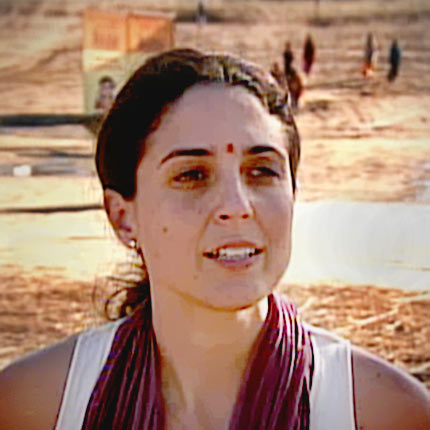
Karmen Plasencia
Miami Beach, FL
Pilgrim to the Kumbh Mela
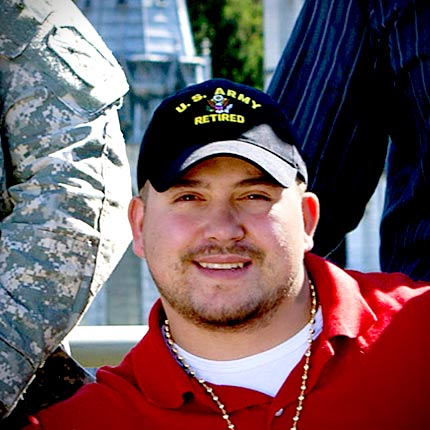
Juan Roldan
Parrish, FL
Pilgrim to Lourdes

Alafia Stewart
Oakland, CA
Pilgrim to Osun-Osogbo
Karmen Plasencia
Hometown: Miami Beach, FL
Occupation: Yoga teacher, massage therapist
Age: 33
Q. Why did you decide to go on the pilgrimage to the Kumbh Mela?
AI heard that this was the largest spiritual gathering on the planet and infused with Indian and Vedic history and culture. As a yoga instructor of 10 years, I wanted to visit India for a long time to connect with the motherland. This festival was the perfect event to motivate me to do a spiritual journey to participate in this bathing experience of cleansing in the Ganges. So I organized a sacred journey to this festival to bring others along for the ride and brought a group of 20 people.
Q. What was the most memorable moment during the Kumbh Mela? Most surprising? Hardest?
A. The most memorable moment was walking throughout the Kumbh Mela and seeing all
the Nagas and Sadhus and the different camps. I had never experienced so much energy
in my life. It was like stepping onto another planet so different from America or
anything I had ever witnessed. So many different aspects of the Hindu religions,
gathered all together peacefully.
The hardest part was when a monsoon and torrential rains hit our camp the first
night! Many of our group members' tents flooded and clothes got wet. I reminded
people that we came all this way to bathe in the Ganges and the Ganges bathed us!
The next morning was tough, everything was muddy and we had to clean up and dry our
clothes. It was all part of the adventure and in divine flow.
Q. How do you feel about your experience now that you've returned?
A. I felt as if I dropped into the heart of India and received blessing. A great deal has happened since I returned from this mystical journey. I stepped into this deep connection with spirit, myself and India.
Q. Would you go again to the Kumbh Mela? Would you go on a different pilgrimage?
A. Yes, absolutely. It was a great experience. Maybe a little rough at times, but
for most part a true test of openness of the mind and full understanding of the
spiritual energy of India.
We took another group on a spiritual pilgrimage to Peru and Macchu Picchu. The trip
was another magical journey of cleansing and personal growth and transformation. It
was a great success and I absolutely LOVED Peru!
Q. What would you tell someone who was thinking about going to the Kumbh Mela?
A. I would tell them to get ready for entering into another dimension, one of Indian spiritual culture that will knock your socks off!
Q. Anything else you want to share with us?
A. I am looking forward to leading more sacred journeys and experiencing and activating myself as well as these sacred sites on the planet. I feel taking groups on these journeys is a catalyst for spiritual healing and transformation in your life.
Juan Roldan
Hometown: Parrish, FL
Occupation: US Army Staff Sergeant, retired
Age: 28
Q. Why did you decide to go on the International Military Pilgrimage?
A. The first time I attended this pilgrimage, I decided to go because while I was recovering in Walter Reed, the Chaplain asked if there were any soldiers that were Catholic and were interested in going on this pilgrimage. I didn't really know what I was getting myself into, but I knew that my life would be different afterwards. I decided to go back to Lourdes because the first time really opened my eyes. I was honestly honored that they would ask me to go back. I didn't know what new experiences I was going to be exposed to. My experience in Lourdes was very uplifting. I arrived with a lot of personal issues and while I was there I felt as though I let go of a lot of those issues. In general my spirit was lighter.
Q. What was the most memorable moment during your time in Lourdes? Most surprising? Hardest?
A. The most memorable part of my time in Lourdes was that I was able to experience everything with my loved ones.
The most surprising moment was that while we were there, we were able to meet a lot of different military nationalities. Looking back on the past, it was truly amazing that we were able to unite so many different nationalities in one place and in peace. The fact that we were able to put aside everybody's issues and come together as one was a truly breathtaking experience.
The hardest moment for me the second time around was not being able to share those experiences with my daughter and mother. However, I am still very grateful to have been there and to have met all of the wonderful people there.
Q. How do you feel about your experience now that you've returned?
A. Now that I've returned, I feel that I've become closer to my faith. I feel as though it has changed my overall outlook on life. My beliefs are stronger and it's something that I want to be able to pass on to my daughter. I want her to know how important it is to believe in something and how important it is to be close to your family and God.
Q. Would you go again to Lourdes? Would you go on a different pilgrimage?
A. I would absolutely return to Lourdes. If the opportunity arose for me to explore other Catholic pilgrimages, I would definitely go. I hope to one day visit Vatican City and be able to listen to Pope Francis direct a Mass.
Q. What would you tell someone who was thinking about going on the International Military Pilgrimage?
A. I would tell them to be open-minded. I would tell them to really throw themselves fully into the whole experience. I would tell them to open their hearts and to allow themselves the opportunity to get closer to God.
Q. Anything else you want to share with us?
A. Thank you for the opportunity and for all that the International Military Pilgrimage has been able to do for me and for my family. I feel really blessed and I hope that this program will be able to continue to inspire, help and change the lives of other military members and their families. I hope to one day be able to help others the way that this pilgrimage has helped me. I believe that miracles truly do exist and I am living proof of that.
Alafia Stewart
Hometown: Oakland, CA
Occupation: Training director for a nonprofit; cofounder of an online Orisha
community
Age: 26
Q. Why did you decide to go on the pilgrimage to Osun-Osogbo?
A. It was time. Both my parents are priests but they never forced the religion on me. I was free to find what spoke to me fundamentally as a spiritual being. So I searched, studied other religions, and eventually found myself back where I started.
Q. What did you do to prepare for your trip?
A. Pray. Meditate. Then pray more. My journey was born out of a longing for clarity and direction.
Q. What was the most memorable moment during your trip? Most surprising? Hardest?
A. The most memorable moment was watching the women priestesses dance in the Araba's courtyard on a sunny day, and in minutes it began to storm. The downpour didn't stop anything, the prayers got louder and smiles wider. As I stood with them in the rain, I felt lifted and clean.
The hardest moment was trying to digest the hottest food on the planet. Nigerians love pepper in what I described as intestinal suicide.
Q. How do you feel about your experience now that you've returned?
A. I feel empowered. My religion has many sects and unfortunately the sects don't unify as much as we should for socioeconomic, political, and sometimes even racially charged reasons. Santeros, Paleros, Lukumis, Ifa Traditionalists, etc. We have so much more in common than we do in differences. Having gone to Nigeria, I bring with me a perspective that is imperative to repairing and rebuilding relationships with other sects.
Q. Would you go again to Osun-Osogbo?
A. I'd do it again a million times over. I truly blossomed in who Alafia really is and what she means to this existence. Q. What would you tell someone who was thinking about going on a pilgrimage to Osun-Osogbo?
A. Plan accordingly, go with trusted local friends, and let the Orisha guide you.
Q. Anything else you want to share with us?
A. A prayer with eyes open will be answered
A prayer with eyes closed will be answered
A prayer in silence will be answered
A prayer out loud will be answered
A prayer on your knees will be answered
A prayer standing up will be answered.
With all the diversity we see in the creation of life, how could there not be just as many paths to God. The methods may be different but the results are the same.

Syed Talha
Framingham, MA
Pilgrim to the Hajj
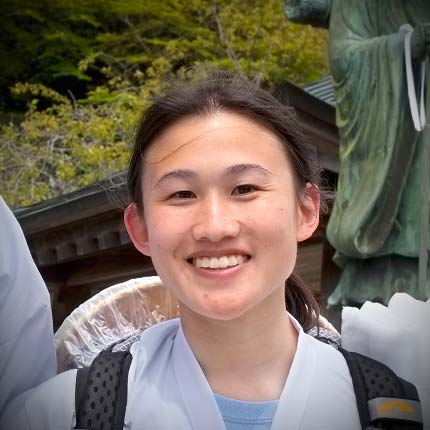
Jenn Tsai
Portland, OR
Pilgrim to Shikoku
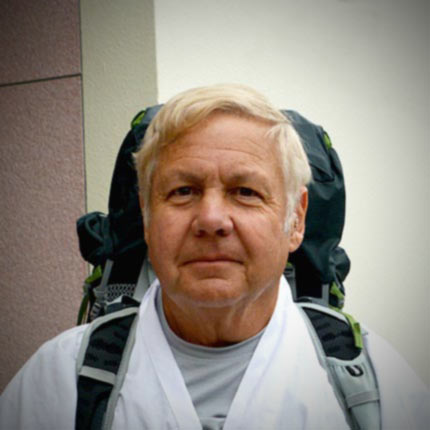
Steve Williams
Hemet, CA
Pilgrim to Shikoku
Syed Talha
Hometown: Framingham, MA
Occupation: Software developer
Age: 31
Q. Why did you decide to go on the Hajj?
A. After my divorce, I needed some form of support and I looked no where but this pilgrimage. Having grown up in Saudi Arabia, you hear and see the festivities around Hajj every year. My parents went for Hajj when I was a child but I do not remember anything of it. Going to the Hajj was also for me a chance to go back and revisit these cities I had visited in my youth.
Q. What was the most memorable moment during the Hajj? Most surprising? Hardest?
A. The whole trip was memorable, every moment of it. From seeing the minarets of the holy mosques from the bus, to stepping for the first time in to the grand mosque. I felt at peace, in the midst of the chaos of 2 million people.
What surprised me was how the best part of both worlds coexist. You might think, these two cities are old school, and old buildings, but you would be wrong. High-tech gear everywhere, the galaxies and iPhones are all around, the technology used to keep the place cool, the huge umbrellas. The western shops with the local shops together. You get the best of both worlds. Starbucks, H&Ms, the Body Shops and then the local souks selling the best of the best oil perfumes.
The four days in Mina Camp were the hardest. That is the one thing about Hajj that no one can prepare you for. And in all honesty that is what Hajj is about. Staying with people in such close proximity. It was a true test of what Hajj is all about. Test of patience.
Q. How do you feel about your experience now that you've returned?
A. A lot of it feels like a dream, a happy dream. It was the best two weeks of my life. You come back to the regular paces of life and now and again I ponder about my experiences. The peace you feel in the Prophet's mosque, it's nowhere else to be found.
Q. Would you go again on the Hajj? Would you go on a different pilgrimage?
A. I would love to go do Hajj again, and now that I have experienced it, maybe I would be better prepared the next time. Although I feel you can never be prepared for what comes your way in Hajj.
Q. What would you tell someone who was thinking about making the Hajj?
A. Forget everything you know about Hajj, all the books you have read, all the lectures you have attended. You are going to Hajj for one thing and one thing only—sacrificing yourself for the sake of God. Embrace it, don't be bogged down with too much technicalities. You are going there to meet your Lord, be free and embrace Him. Be very patient. Be patient, no matter what people do and say. You are in front of God, He will make your journey easier for you.
Q. Anything else you want to share with us?
A. Something I had talked about during Hajj with one of the camera guys: sacrifice. In life there is a lot of sacrifices, but sometimes you understand why you are being asked to sacrifice, but other times, you aren't told anything. Just like how Abraham was told to sacrifice his son. Without reason. That is the real lesson of Hajj for me, learning to sacrifice and being patient.
Jenn Tsai
Hometown: Portland, OR
Occupation: Resident physician
Age: 29
Q. Why did you decide to go on the pilgrimage to Shikoku?
A. I have wanted to go for a long time. It appealed to me because of the challenge of walking the distance, and the idea of the spiritual journey where, while you go to feel connected to a tradition that others have done before, you learn something about yourself that you haven't known before.
Q. What was the most memorable moment during your trek around the island? Most surprising? Hardest?
A. There were many memorable moments. In fact, the whole trail is made up of them. One of the most touching was the night I stayed at a minshuku/bed and breakfast inn which was run by a very kindly elderly lady. She was no longer officially running the hostel, but we had found the number from an older guide book, and she didn't turn us away. It was a lovely place with a beautiful view of the ocean. The next morning, we ate breakfast with another pilgrim who stayed there, then took a ferry across the bay. The scenes that we passed on the ferry in the early morning were breathtaking, simply inspiring.
The most surprising moment may have been the gathering with wild boar stew. As we were walking along, some farmers gathered around a campfire beckoned us over. This was in the middle of the afternoon. They were cooking a stew in an oil drum, and explained it was wild boar that they caught with nets in the mountains. As if that weren't surprising enough, they showed us two "pet" deer that they had caught in the mountains!
One of the hardest things to do on the trail was getting up every morning, especially after staying at a particularly comfortable lodge the night before. My feet would still be aching in the morning and it was so hard to get dressed, packed, and get back on the road.
Q. How do you feel about your experience now that you've returned?
A. It was an amazing experience. I don't have words to describe it. I'm so glad I went!
Q. Would you go again to Shikoku? Would you go on a different pilgrimage?
A. Yes, without hesitation. I haven't finished going to all 88 temples so I have to go back to finish it some day. I am not sure if I would go on other walking pilgrimages. I've lived in Japan before and really appreciate the culture, and I feel completely safe there. I don't know that I would have the same comfort level or cultural attachment to other pilgrimages.
Q. What would you tell someone who was thinking about going on a pilgrimage to Shikoku?
A. Just go. It's a one in a lifetime opportunity, and you will surely learn something new and have worthwhile, meaningful experiences. Before you go, do your research, and make sure you have comfortable walking shoes.
Steve Williams
Hometown: Hemet, CA
Occupation: Gunnery Sergeant with the US Marine Corps (retired) and
Engineering Liaison for UAV aircraft
Age: 62
Q. Why did you decide to go on the pilgrimage to Shikoku?
A. I was stationed at Iwakuni, Japan several times for a total of seven years during the 1970s and 80s. Before I left in 1985, I would take my motorcycle around southern Japan and Shikoku. While in Shikoku I saw Japanese [people] walking with the straw hats and white coats and was curious about what they were doing. When I found out about the pilgrimage I decided someday I would try it. Many years later when I retired I was looking for something to do when I saw an NHK special about the pilgrimage. Right away I started training for my first trip.
Q. What was the most memorable moment during your trek around the island? Most surprising? Hardest?
A. The whole trip is magical so it is difficult to say which experience is the most memorable. There were so many! One of the most touching was on my first day I was at Temple 3. A wonderful older woman, bent with age, came over to me and pointed to my shoe. When I looked down I realized what she was trying to tell me. My shoe lace had become undone and she was worried I might trip and fall!
The most surprising part of the trip was living in the moment for the first time in my life. I had spent my whole life working to make a living as most of us do, raising a family, etcetera. But while on the trail the only concerns are where to eat, where to sleep, and how far you will walk today. No concerns about the outside world and its problems. Just waking up each morning, and wondering what new sights and experience the day will bring. And in the afternoon after a long and arduous walk, a well deserved rest and meal with another new day to look forward to.
The hardest part was leaving the trail! I wish I could just keep going but will go back again soon. The experience has definitely changed me and has shown me I am more capable of doing things than I had imagined at my age. Hopefully I can continue going as long as I'm physically able.
Q. Are you planning on going back to Shikoku? Would you go on a different pilgrimage?
A. I am planning on going back in March of 2015. I would also like to walk the Compostela De Santiago in Spain.
Q. What advice do you have for someone thinking about going to Shikoku?
A. I would only say do it! Don't wait. Even if you only have a week or so get started.
Q. Anything else you'd like to share about your experience?
A. I would just like to say to the people of Shikoku thank you for letting us participate in the henro experience and accepting us with your warmth and friendliness in our journey to the 88 temples.
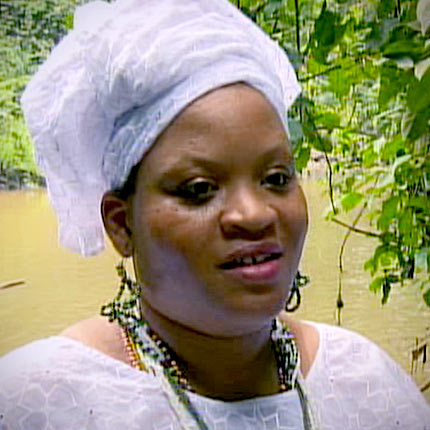
Funlayo Wood
New York, NY
Pilgrim to Osun-Osogbo
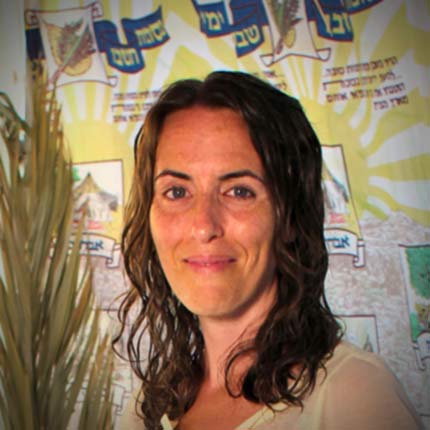
Ahava Zarembski
Philadelphia, PA
Pilgrim to Jerusalem
Funlayo Wood
Hometown: New York, NY
Occupation: Executive director of an Orisha community organization in New
York City; Doctoral Candidate at Harvard University
Age: 33
Q. Why did you decide to go on the pilgrimage to Osun-Osogbo?
A. I help lead travelers on biannual spiritual journeys to Nigeria with the Orisa Community Development Corporation and the Osun festival is always the highlight. As a devotee of Osun, I am ever excited to attend and participate in this wonderfully massive collective uplifting of energy and to see the sights and hear the sounds through the eyes and ears of those who are coming for the first time.
Q. What did you do to prepare for your trip?
A. Planned, packed, and prayed. Those are my three Ps of any type of travel. I've spent a good deal of time in Nigeria so it's like going to another home for me.
Q. What was the most memorable moment during your trip? Most surprising? Hardest?
A. The most beautiful and memorable moment was seeing the faces of the initiates, Alafia and Oni, as they came out of their period of seclusion. I could see and feel the energy of Osun around them and it was simply gorgeous! Going down into the grove during the festival is always a bit of a challenge during the festival because of the crowd, and I actually cut my back going into the main shrine house but I wear the scar proudly.
Q. How do you feel about your experience now that you've returned?
A. I feel great and I can't wait to go back.
Q. Would you go again to Osun-Osogbo? Would you go on a different pilgrimage?
A. I am going again this year and taking another group of devotees; I can't wait to share this beautiful experience with them. I would also love to go on other pilgrimages, the Kumbh Mela looks amazing!
Q. What would you tell someone who was thinking about going on a pilgrimage to Osun-Osogbo?
A. I would say, "Let's go!" I'd also say be sure you are in good health as the journey can be physically taxing: it's hot, it's crowded, the walking surfaces are uneven, and there's quite a lot of walking. But the energy is like none other and it is always worth the journey. I'd also advise to go with reputable people, and going with all the reverence due Osun and the people of her land.
Q. Anything else you want to share with us?
A. The ability and willingness to express gratitude is one of the highest forms of moral fortitude. I thank WGBH for the opportunity to share this beautiful and oft-misunderstood tradition with the American public. I also thank my Harvard advisor, Jacob K. Olupona, for recommending me for participation in making the documentary and, most of all, I thank the people of Osogbo for keeping their annual covenant with Osun and keeping her worship alive. Ore Yeye o!
Ahava Zarembski
Hometown: Philadelphia, PA
Occupation: Fashion designer
Age: 37
Q. Had you visited Israel prior to this particular journey?
A. I grew up in a suburb of Philadelphia, the Jersey side. I never really felt
spiritually at ease in America. I always felt kind of like an outsider. I made
aliyah [immigration to Israel] at the age of 22, originally just doing six
months of policy research and Torah learning. Fell in love, with a person and with
the place. I felt like it was home. And it was so hard. It was so hard when I first
moved here. It was like I jumped into the ocean full on. I wanted to be fully
Israeli, learn with Israelis. There were a lot of integration bumps along the way.
Integrating into a new country is difficult. But by the time I was 27 or 28, I was
full on living life in Israel. I became fluent, I set up a company, I worked in
government.
Twelve years later, because of a bad break-up—not with the same
person—was like, ok, I want to see what life is like in America. I moved to
Israel when I was so young, and I wanted to see what else exists. I just had lots of
question about, am I too limited here? Everyone else seemed to be setting up that
stable life in America. What does that look like, and is it right for me?
Q. What was your experience in America like after you returned from living in Israel?
A. I moved back to America and thought I was going to stay in America. I was a full on fashion designer based in Philadelphia. It was a very weird feeling when I was moving back. When you guys caught up with me, it was after a period of not really connecting spiritually in America. In Israel, no matter where I'm at, it's a Jewish country and shabbat happens. I was in total shock in American, in that shabbat and the synagogue is an institution that you go to to be Jewish. It's a whole different constitution. I felt more spiritually connected in yoga than in schul. It felt, to me, really really inauthentic. At the end of the day, I stopped keeping shabbat and studying the Torah. There was a slow coming back to Judaism on my own terms. I felt I need to come back to Israel, to reconnect and remember what it's all about.
Q. Why did you decide to visit Israel on this particular journey?
A. I came back to Israel for the High Holidays, from before Rosh Hashana til the end of Sukkot. That was the plan. Once I got here, and the people I was living with felt a wholeness, and integrating their Judaism into their everyday life, I felt so at ease, and I was like, what the hell am I doing? When you guys caught up with me, it was already towards the end of the High Holidays, I'd already been in Israel for a month. I was pretty much debating whether or not to stay, leaning towards staying.
Q. What did you ultimately decide to do?
A. All we have as human beings is this instinct of what we feel is right. So I went with that. Now I'm a full-on fashion designer here in Israel. I live in Jerusalem and have a studio in Tel Aviv, and I still manufacture in Philadelphia. So a little bit of back and forth.
Q. What is life for you like now in Israel, spiritually?
A. All of my close spiritual network are my neighbors. They all live within a ten block radius. We all get together on shabbat. We have really real conversation about our spiritual goals for ourselves and where we're at. My meditation teacher is also my rabbi. I also go to my yeshiva a day and a half a week. While I work the other days, I'm there, I'm learning Torah. For me, creating art and clothing and going into the ocean are spiritual things as well. I think I could have pieced together something piecemeal in the U.S., but for me everything is integrated here. Spiritually is reintegrated into my life.
Q. What does the notion of pilgrimage mean to you? Do you feel like you're still on one, or is this now simply your life?
A. Pilgrimage is really a spiritual search. In the Biblical construct of journey, and search, and spiritual search, and search for who we are and our purpose in the universe—I mean in the universe, not just in terms of like, getting the right job—I mean what we're brought here to do, that I know for sure is a life-long journey. The fact that I'm in a space that feels spiritually at home, what that really means is that I can go deeper into the search. As a human being, I will guaranteed be always seeking and search. I'm still required, as a Jew, to make a pilgrimage three times a year. Even in Israel, a lot of people don't live in Jerusalem, so they have to pick themselves up and go to Jerusalem. God knowns, I'm a searcher. God knows, I'm a seeker. Our whole self is in a constant state of change. That is a lifelong journey.
Q. What would you tell someone who was thinking about making a pilgrimage to Israel?
A. Go. If we're spiritually rooted in our center, your light shines brighter. It's clearer to the world, and clearer to one's self. In my own experience, I feel stronger, I feel brighter, I feel like I can speak louder and be heard more. And you will bring that back to wherever you end up.
More from PBS

The Story of India
In this landmark six-part series, Michael Wood embarks on a dazzling and exciting journey through today's India.

Walking the Bible
Join Bruce Feiler on an epic, ten thousand mile odyssey to explore the greatest stories ever told, in the settings where they occurred.

The Buddha
Narrated by Richard Gere, this documentary tells the story of the Buddha's life, a journey especially relevant to our own bewildering times of violent change and spiritual confusion.




